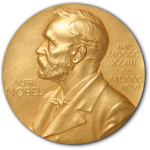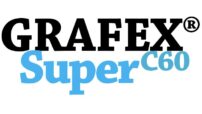A BRIEF HISTORY OF GRAFEX® SUPER [C-60] FULLERENES.
Brief History
The1985 ‘discovery’ of the Regular C60 fullereneas a ‘new’ allotrope of carbon joining the existing diamond and graphite allotrope members revolutionized the world of chemistry garnering for its discoverers the1996 Nobel Prize in Chemistry. Regular C60 fullerene molecules was originally referred to casually as “Bucky Ball” due to its similar appearance to that of the truncated icosahedron-shaped soccer ball.

Like Regular C60, Grafex® Super[C-60] has shown tremendous potential in health & medicine and other areas of research. Once Grafex® Super[C60] was discovered in 2006 it was determined by management to set up an in-house research and development program to determine how to mass produce this material as well as to determine its use in the supplement and biomedical industries. What was of the utmost importance was determining its potential toxicity, not only to the environment but also the potential toxicity in animals and humans.(see toxicity research)
Over the past 16 years, this Grafex® Super[C-60] fullerene molecule has been examined, tested and characterized by no less than 15 universities and 5 federally certified research laboratories, resulting in more than “600 evaluations”. This was achieved through the utilization of over 20 types of instrumentation and equipment of the most advanced and sophisticated status in the Nano Laboratory Research World:(see detailed testing)

Below is a list of some of the instrumentation/equipment that was used in our research pursuits, in an effort to identify just what type of carbon molecule that we had discovered, as well as what its overall capabilities might deliver. You will find throughout this website, some of the results of these testings.
Equipment and instrumentation used: SEM, ESEM, TEM, HRTEM, EDS, EDEX, Raman, ESR/EPR, XRD, ICP, TGA, ERM, BET, CHN analyzer, XPS, MAS Skeletal Volume/Density, Hydrophobicity, Gas Chromatography/Mas Spectrometry as well as Radiolabeling and Cell Toxicity studies.
However, the major effort was placed on evaluating Grafex® Super[C-60] in regards to its biocompatibility and safety due to its high potential value in supplements, and medical research.
Despite rigorous testing, Grafex® Super[C-60] has never exhibited toxicity and, in fact, has been shown to have excellent biocompatibility, both through in vivo and in vitro testing, for all testing to date.
The above specialized testing was conducted, with the major focus being placed on the characterization, toxicity and biocompatibility of the Grafex® Super[C-60] molecule. There has also been considerable positive research conducted regarding Grafex® Super[C-60’s] potential uses in electrical conductivity, two and three D printing, as well as in electromagnetic field (EMF) absorption.
In addition to excellent biocompatibility, in vivo testing has further revealed significant enhancement of qualitative and quantitative longevity effects, anti-inflammatory properties, and reduced tumorgenicity in experimental animals. (see mice studies/ research Pg)

Furthermore, there is a long history of publications reporting beneficial health effects of exposure to pure carbon fullerene-like structures beginning with a naturally occurring carbon-based mineraloid first reported near the village of Shunga, Russia. ‘Shungite’ has been used as a folk medical treatment since the early 18th century. Peter the Great set up Russia’s first spa in Karelia to make use of the water purifying properties of shungite which he had himself experienced. He also instigated its use in providing purified water for the Russian army.
The anti-bacterial properties of shungite have been confirmed by modern testing. Shungite, containing various percentages of multi-layered carbon fullerenes, as well as other carbonaceous materials. This material has also been found in a number of other areas including Canada, Austria, India, Democratic Republic of Congo, and Kazakhstan.
This publication led to a cottage industry supplying Regular C60 in plant oils to an increasing number of self-experimenters who regularly consume a C60 molecule material of dubious purity, quality and of dosage amounts.
The amount administered to the individual rats in the French study, despite the disparity in weight difference between the rat and humans, and according to the marketing websites, the reported effects appeared to be overwhelmingly positive and beneficial.
Similar beneficial effects were also observed with the use of Grafex® Super[C-60] in experimental animals (mice and dogs) in biocompatibility and toxicological tests (see research.pg). Not surprisingly, because of these results, a small group of people began their own self-experimentation programs by consuming Grafex® Super[C-60] suspended in various plant oils, orally. This group included humans and their pets; many with terminal illnesses.

The results of this self-experimentation (including 4 Drs.) have again been overwhelmingly positive as reported in individual testimonials. These reviews include those of physicians for verifying the reduction of serum PSA in regards to prostatic carcinoma as well as chemotherapy proceeding with far less severe side effects. But perhaps most significantly, it has not resulted in a single reported instance of a negative effect from such personal experimentation.
A recently published limited retrospective clinical review through the Einstein Institute, USAT – School of Medicine has recently looked into this self-experimentation.
This clinical review examined the medical records and laboratory values obtained from a small number of these human self-experimenters that have had long term (up to >13 years) environmental aerosolized exposure to Grafex® Super[C-60] and/or have been self-experimenting by consuming orally, olive/coconut oil suspensions of Grafex® Super[C-60] for over 6 years.
The results of this clinical review demonstrated no adverse impact on liver, kidney, or lungs, yet considerable beneficial effects have been reported almost universally from oral Grafex® Super[C-60] consumption. A similar finding in “two separate controlled mice experiments” (over a 5 year period), along with life prolongation, was noted in the early phases of animal testing as well. (mice research ).
Toxicological and biocompatibility concerns exist and a few studies, primarily in vitro, have demonstrated potential toxicity for certain carbonaceous materials outside the spherical multilayered fullerene category that include, with specificity, graphene and carbon nanotubes. Various theories have been proposed for such toxicity observations, but the two most common contributors appear to be contaminants and structural shape. A third toxicity concern was biological persistence or the inability of the body to eliminate or metabolize nanomaterials.
Research and development history have proceeded with great difficulty in the “production and manufacturing” of various nanocarbon structures, particularly in regards to consistency in purity and quality, plus production in any significant volume. Toxic contaminants from production methods of a variety of natures can become problematic in many cases and must be removed by extraction with generally biologically toxic or otherwise bioincompatible solvents to harvest the desired carbon structure for biological purposes.
With a realization of the potential of purity and nanocarbon shape considerations, especially where post-treatments for increasing absorptive hydrophilicity of the material is concerned, toxicological and biological compatibility confirmation is recommended for all manufacturing of fullerene material before self-experimentation. Once confirmed, spherical fullerene-like materials would be expected to be safe and biocompatible.
Grafex® Super[C-60’s] extensive testing has established its reliable biocompatibility, lack of toxicity as well as its exceptionally high quality and purity. (research pg.)
